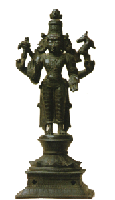From Vedic Priests to Yoga Sutras, Tantra Yoga and Hatha Yoga
Yoga is a system of physical and mental exercise that is now famous throughout the world. The word yoga means ‘to join together’ and practicing yoga brings the body and mind together into one harmonious experience. The first written accounts of yoga are found in the scriptures of the Vedas and the Upanishads. The first yogis were part of India’s ancient Vedic religion. As time went by, they wanted a more direct spiritual experience instead of the symbolic rituals practiced by the Vedics at the time. So they developed yoga. Using the inter-relationship between mind and body, the yogis developed a method to maintain this balance, combining movements with breathing and meditation techniques to promote peace of mind and physical health.
The Vedic Priests
Vedic priests documented these practices and beliefs and slowly but surely refined and developed yoga. One of the most famous scriptures, the Bhagavad Gita, was written around 500 B.C. These Vedic priests believed in teaching the sacrifice of the ego through self-knowledge, action (karma yoga) and wisdom (jnana yoga).
Pre-Classical Yoga

The creation of the Upanishads marks the Pre-Classical Yoga. The 200 scriptures of the Upanishads (the conclusion of the revealed literature) describe the inner vision of reality resulting from devotion to Brahman. These explain three subjects: the ultimate reality (Brahman), the transcendental self (atman), and the relationship between the two. The Upanishads further explain the teachings of the Vedas.
Yoga shares some characteristics not only with Hinduism but also with Buddhism that we can trace in its history. During the sixth century B.C., Buddha started teaching Buddhism, which stresses the importance of Meditation and the practice of physical postures. Siddharta Gautama, the first Buddhist to study Yoga, achieved enlightenment at the age of 35.
Later, around 500″ class=”related_products_container” B.C., the Bhagavad-Gita or Lord’s Song was created and this is currently the oldest known Yoga scripture. It is devoted entirely to Yoga and has confirmed that it has been an old practice for some time. However, it doesn’t point to a specific time wherein Yoga could have started. The central point to the Gita is that – to be alive means to be active and in order to avoid difficulties in our lives and in others, our actions have to benign and have to exceed our egos.
Just as the Upanishads further the Vedas, the Gita builds on and incorporates the doctrines found in the Upanishads. In the Gita, three facets must be brought together in our lifestyle: Bhakti or loving devotion, Jnana which is knowledge or contemplation, and Karma which is about selfless actions. The Gita then tried to unify Bhakti Yoga, Jnana Yoga, and Karma Yoga and it is because of this that it has gained importance. The Gita was a conversation between Prince Arjuna and God-man Krishna and it basically stresses the importance of opposing evil.
The First Yoga Sutras
The first systematic yoga programme can be found in Patanjali’s yoga sutras. Dating from the classical period and written in the second century, these yoga sutras describe the path of Raja Yoga, also known as classical yoga. Patanjali is often considered as the father of yoga and his yoga-sutras still strongly influence all styles of modern yoga. In Patanjali, the art of yoga is divided into an ‘eight limbed path’ containing the steps to enlightenment.
Classical Period
The Classical Period is marked by another creation – the Yoga Sutra. Written by Patanjali around the second century, it was an attempt to define and standardize Classical Yoga. It is composed of 195 aphorisms or sutras (from the Sanskrit word which means thread) that expound upon the Raja Yoga and its underlying principle, Patanjali’s Eightfold path of Yoga (also called Eight Limbs of Classical Yoga). These are:
- Yama, which means social restraints or ethical values;
- Niyama, which is personal observance of purity, tolerance, and study;
- Asanas or physical exercises;
- Pranayama, which means breath control or regulation;
- Pratyahara or sense withdrawal in preparation for Meditation;
- Dharana, which is about concentration;
- Dhyana, which means Meditation; and
- Samadhi, which means ecstasy.
Patanjali believed that each individual is a composite of matter (prakriti) and spirit (purusha). He further believed that the two must be separated in order to cleanse the spirit – a stark contrast to Vedic and Pre-Classical Yoga that signify the union of body and spirit.
Patanjali’s concept was dominant for some centuries that some Yogis focused exclusively on Meditation and neglected their Asanas. It was only later that the belief of the body as a temple was rekindled and attention to the importance of the Asana was revived. This time, Yogis attempted to use Yoga techniques to change the body and make it immortal.
From Tantra Yoga to Hatha Yoga
During the post-classical period, yoga teachers created a system of practices designed to rejuvenate the body and life. They rejected the teachings of the ancient Vedas and developed Tantra Yoga, with various techniques to cleanse the body and mind. These body centred practices led to the creation of Hatha Yoga.
Post-Classical Yoga
At this point, we see a proliferation of literature as well as the practice of Yoga. Post-classical Yoga differs from the first three since its focus is more on the present. It no longer strives to liberate a person from reality but rather teaches one to accept it and live at the moment.
Yoga was introduced in the West during the early 19th century. It was first studied as part of Eastern Philosophy and began as a movement for health and vegetarianism around the 1930’s. By the 1960’s, there was an influx of Indian teachers who expounded on Yoga. One of them was Maharishi Mahesh, the Yogi who popularized Transcendental Meditation. Another one is a prominent Yoga Guru Swami Sivananda. Sivananda was a doctor in Malaysia and he later opened schools in America and Europe. The most prominent of his works is his modified Five Principles of Yoga which are:
- Savasana or proper relaxation;
- Asanas or proper exercise;
- Pranayama or proper breathing;
- Proper diet; and
- Dhyana or positive thinking and Meditation
Sivananda wrote more than 200 books on Yoga and Philosophy and had many disciples who furthered Yoga. Some of them were Swami Satchitananda who introduced chanting and Yoga to Woodstock; Swami Sivananada Radha who explored the connection between psychology and Yoga, and Yogi Bhajan who started teaching Kundalini Yoga in the 70’s.
Shri Krishnamacharya
Between 1800 and 1900, yoga teachers started travelling to the West, hoping to attract more followers. By 1920, Hatha Yoga was being promoted in India by Shri Krishnamacharya. Shri Krishnamacharya travelled through India giving demonstrations of various yoga postures and opened the first Hatha Yoga school. B.K.S. Iyengar, T.K.V. Desikachar and Pattabhi Jois were three students of Shri Krishnamacharya who continued his legacy and increased the popularity of Hatha Yoga.
Yoga Goes to Hollywood
In 1947 Indra Devi opened her yoga studio in Hollywood. Since then, other western and Indian teachers have popularised Hatha Yoga which has gained millions of followers. Nowadays there are numerous schools and styles, emphasising different aspects of the practice.
